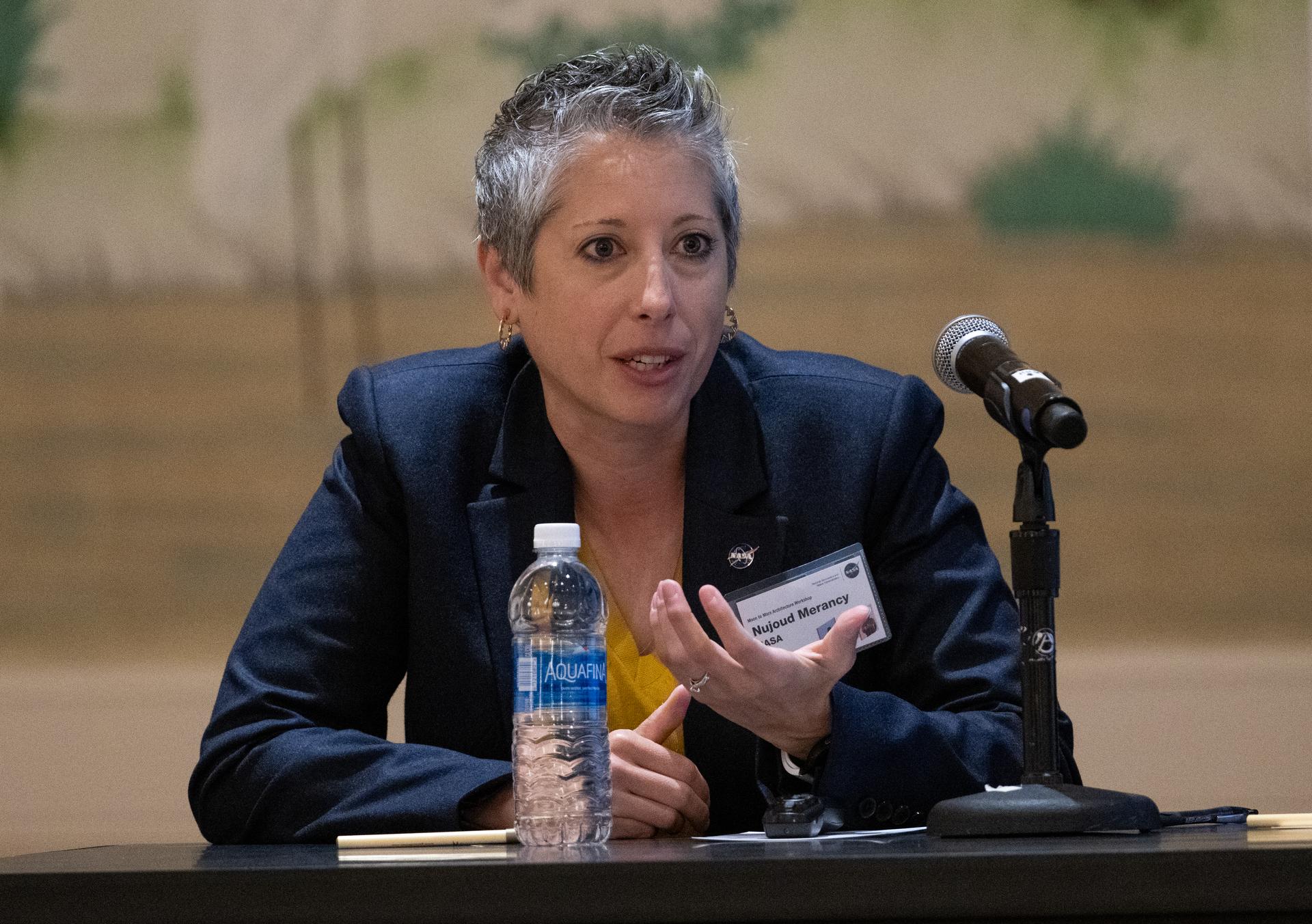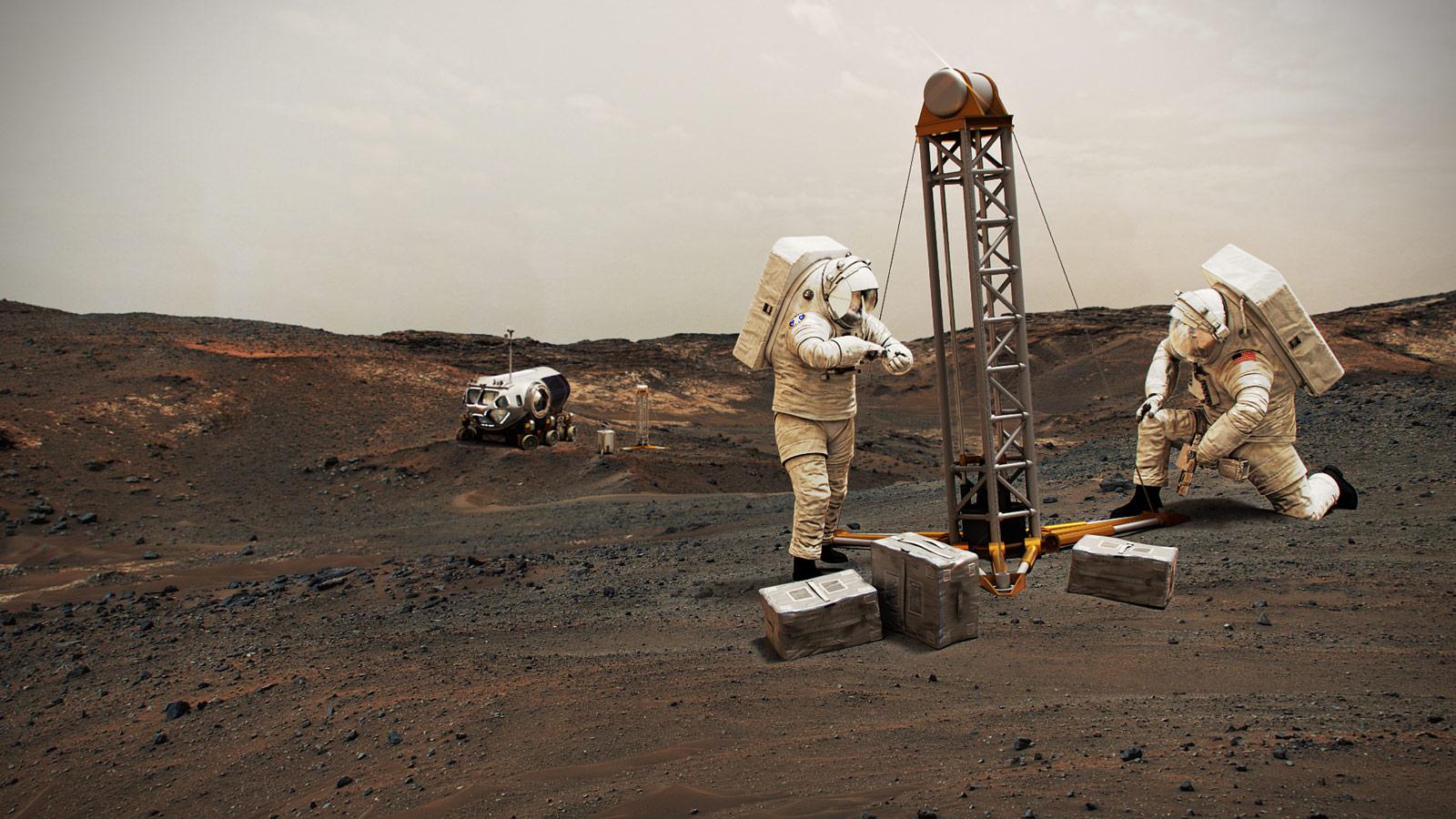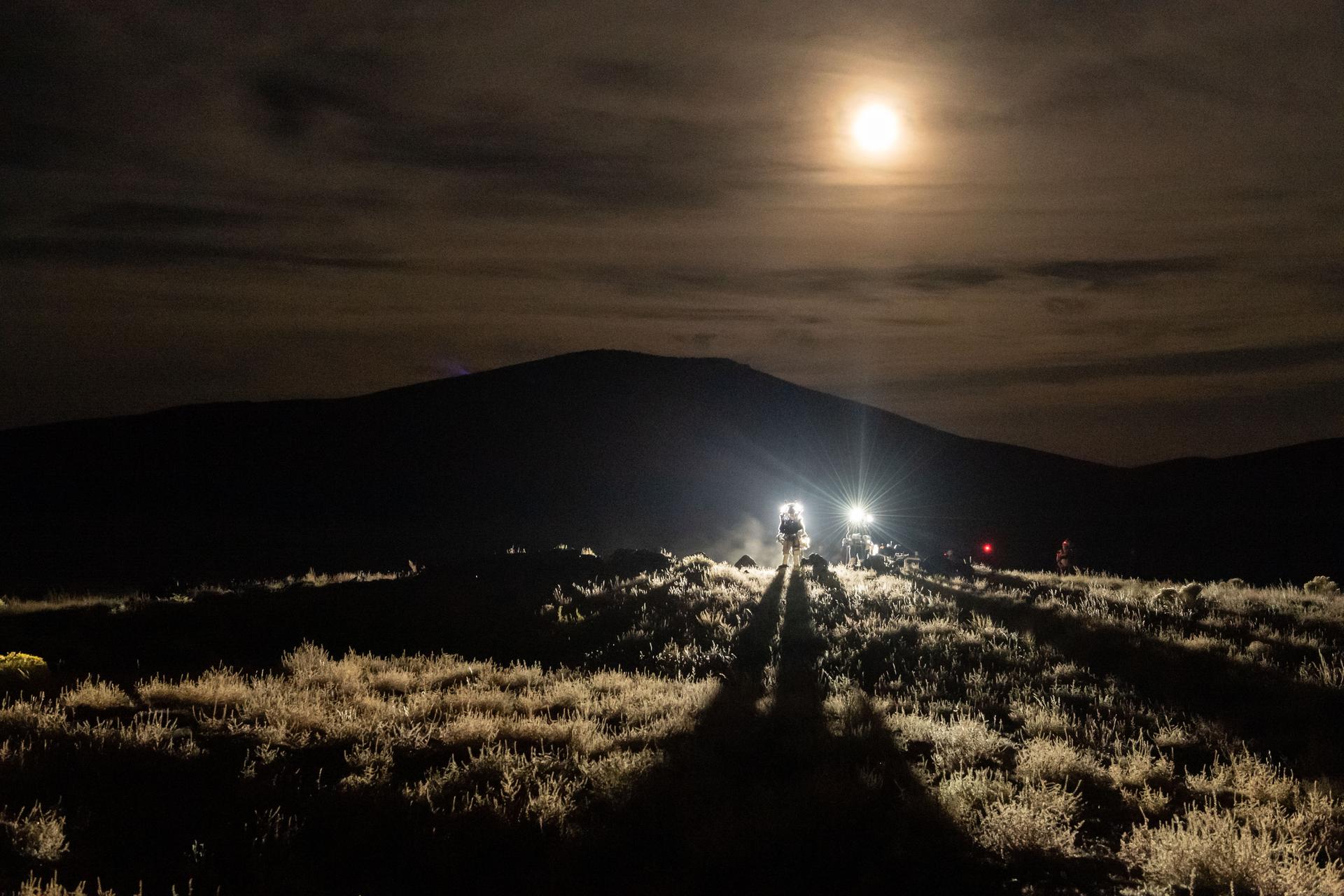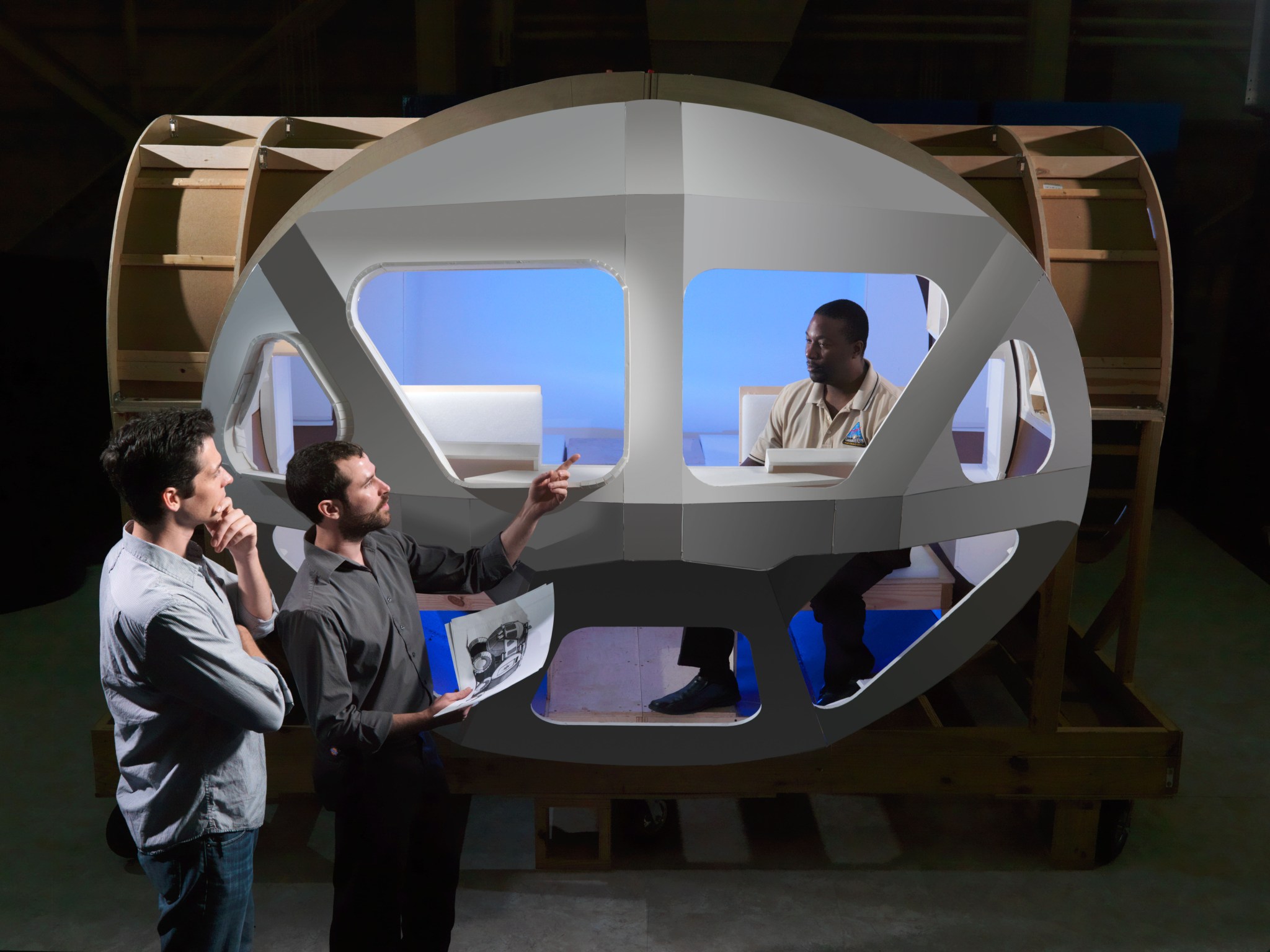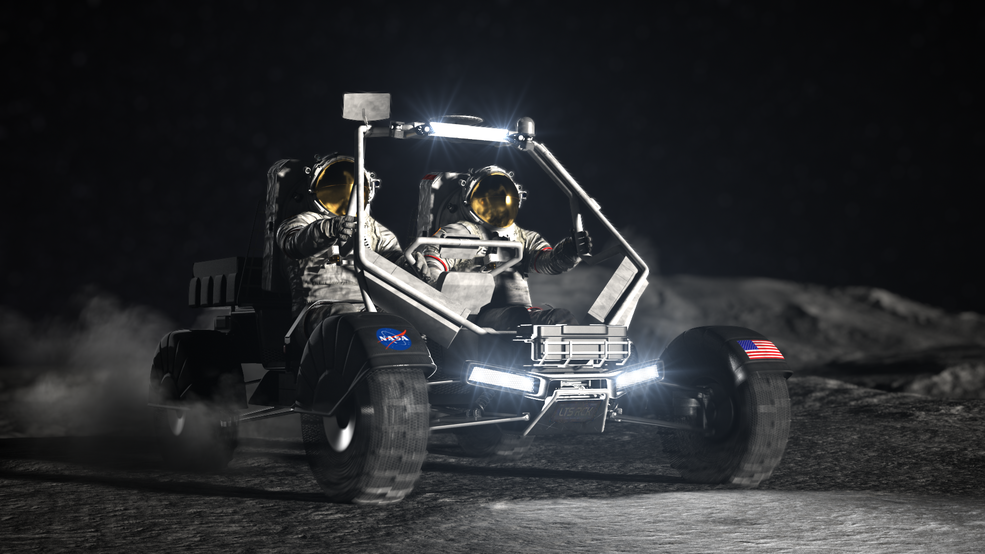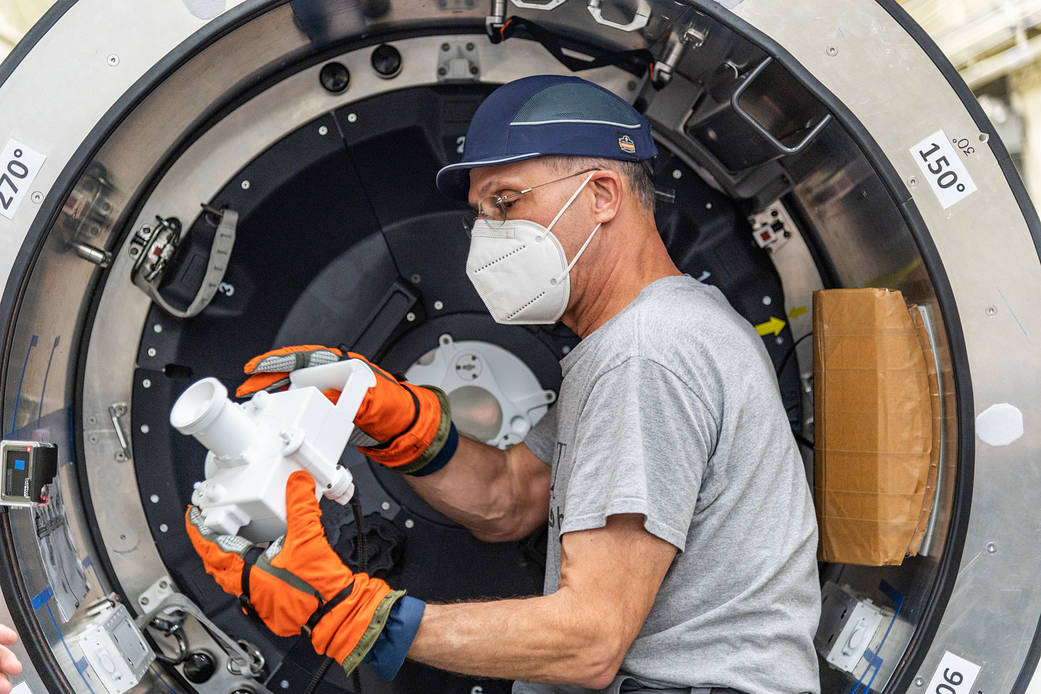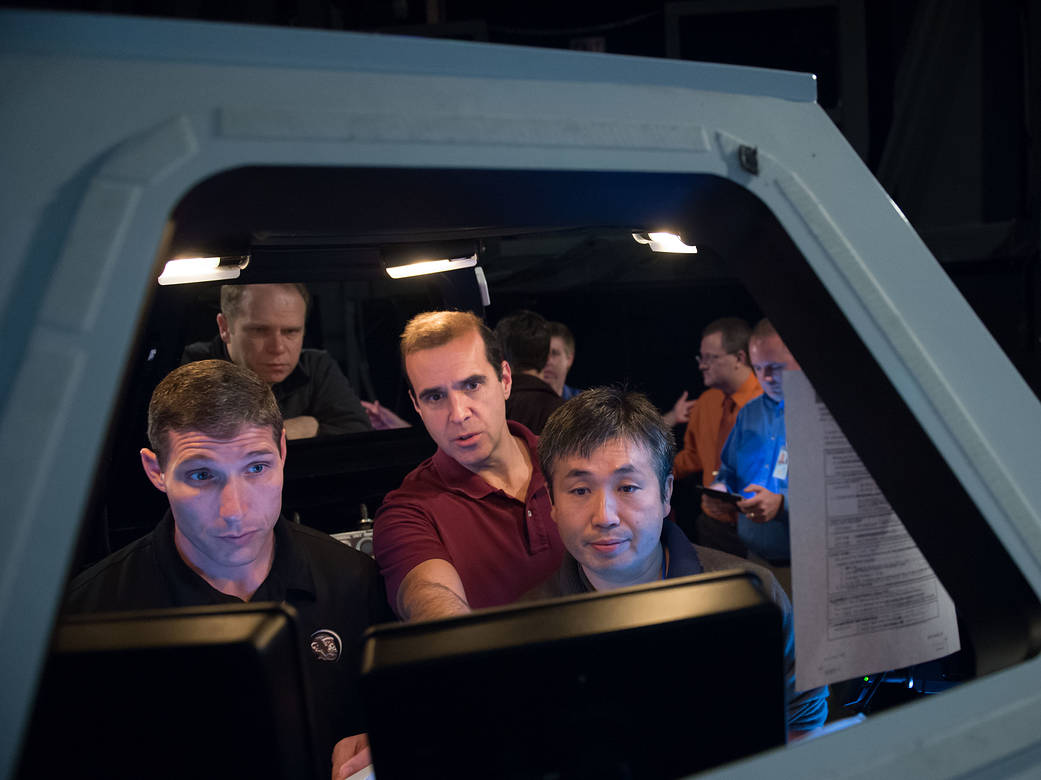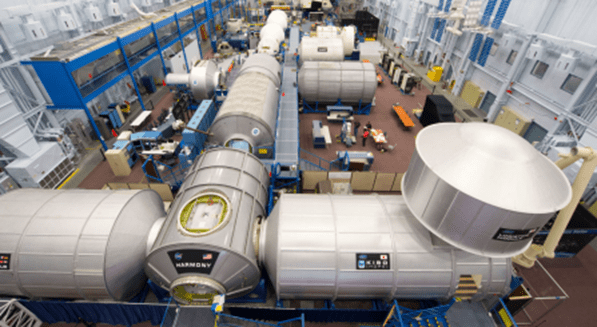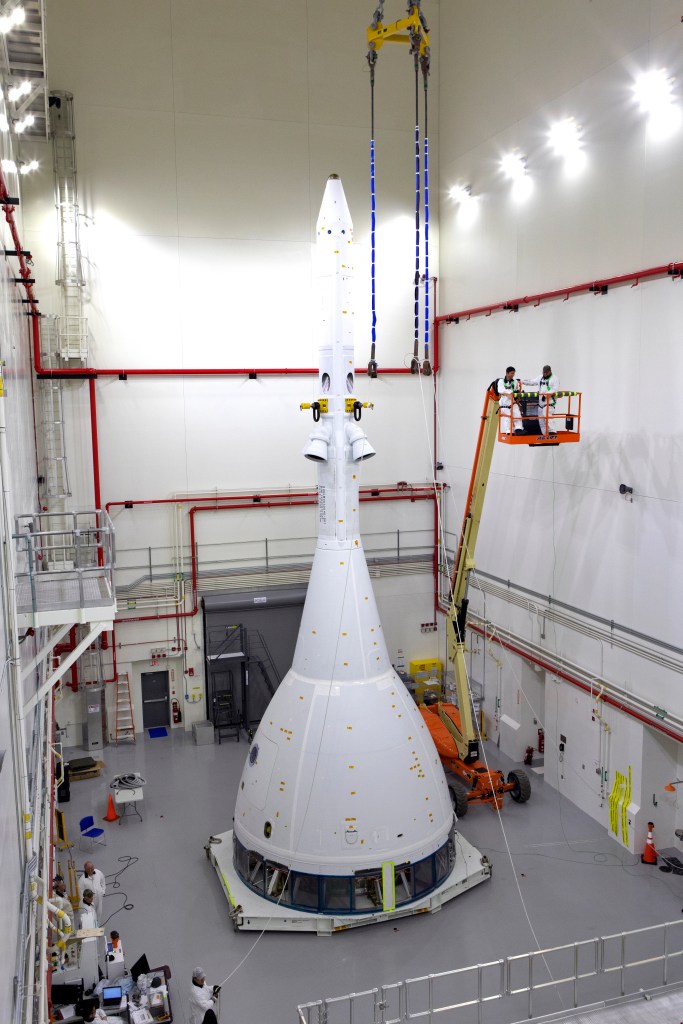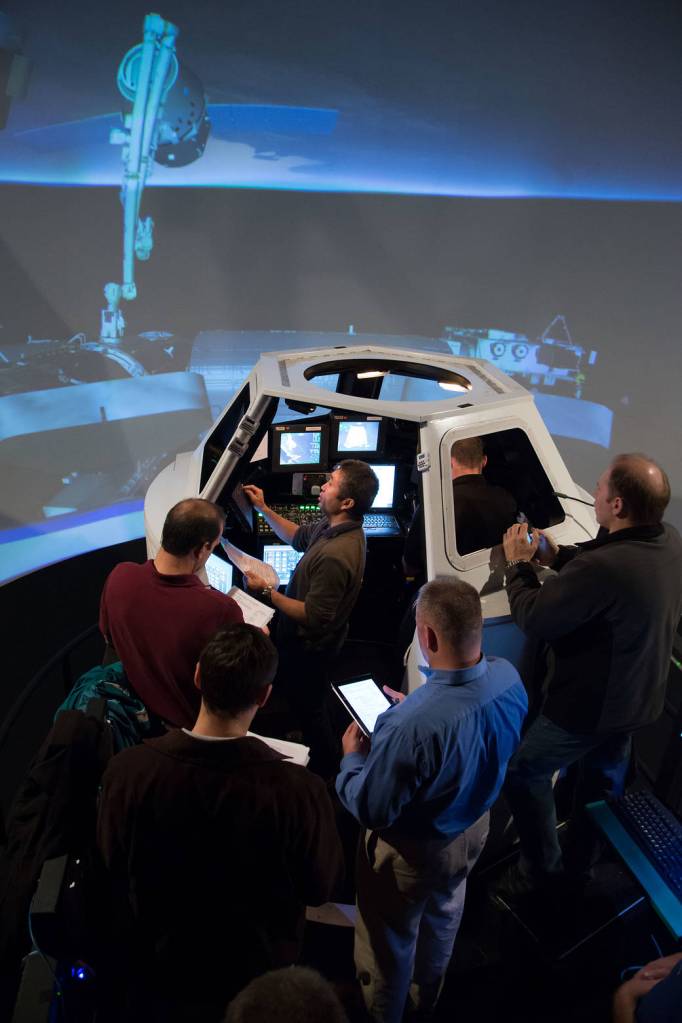Planning, Architecture & Analysis

Introduction
NASA’s Johnson Space Center (JSC) is a key contributor to NASA’s return to the moon under Artemis. Working with our partners in industry, academia and the international community, the Moon to Mars Architecture is a roadmap for the long-term exploration of the lunar surface, our first steps on Mars and the journey beyond. We create the plans for sending people back to the Moon and on to Mars. We provide planning, architecture and analysis support to NASA’s exploration programs, which stitch together the pieces that make NASA’s missions possible.
JSC has several groups that provide capabilities and expertise in Planning, Architecture and Analysis. NASA’s Flight Operations Directorate (FOD) utilizes operational expertise to influence exploration spacecraft design. The Neutral Buoyancy Laboratory (NBL) is a versatile facility, one of the world’s largest indoor pools, supporting large-scale simulations for lunar or Mars missions. The Center for Design and Space Architecture (CDSA) focuses on human-centered design, providing functional solutions synchronized with integrated systems. The Exploration Mission Planning Office (EMPO) enhances mission planning with high-performance computing and data analytics expertise. EMPO leads in mission design, human-in-the-loop testing, and analog mission planning. The Lunar Architecture Team (LAT) and Mars Architecture Team (MAT) focus on lunar and Mars mission architectures, contributing to the long-term vision of human space exploration. The Exploration Development Integration Division (EDI) ensures program integration, human exploration requirements development, and verification/validation.
Embracing innovation and collaboration, the Johnson Space Center extends a warm invitation to external partners to harness our capabilities. Together, we cultivate a collective dedication to pushing the frontiers of human spaceflight. Delve into the capabilities outlined below and join us on the thrilling adventure of space exploration as we pioneer at the forefront of discovery.
Architecture & Concept Formulation
Lunar Mission Architecture
Overview | The Lunar Architecture Team (LAT) defines lunar conceptual reference missions, architectures, and assessment of alternatives, as well as key performance parameters needed for lunar orbital and surface missions.
Details |
- Define conceptual and reference missions for lunar environments
- Define lunar mission architecture and perform alternative assessments
- Lunar mission timeline and site planning
- Develop and refine both crewed and uncrewed activities on the moon for future missions to include concept of operations, timeline development, and site planning
- Develop conceptual white papers to define and document NASA approaches to lunar architecture
Mars Campaign Architecture
Overview | The Mars Architecture Team (MAT) is responsible for developing human Mars conceptual reference missions, architectures, and assessment of alternatives that provide the future mission context needed to assess Mars-forward extensibility and commonality.
Details |
- Define human Mars conceptual reference missions, architecture, and alternative assessments
- Define mission elements and performance parameters for crewed Mars missions
- Identify technology gaps and associated decision points related to Mars architecture
- Define Mars analog needs on Earth, ISS, Gateway and the lunar surface
- Develop and refine the crewed and uncrewed activities on Mars for future missions
- Determine functional allocations for Mars elements
- Identify challenges/disconnects related to the Mars architecture
- Develop Architecture Concept Review (ACR) documentation
- Provide information and analyses to support evolving Agency and Exploration Systems Development Mission Directorate (ESDMD) strategic planning, including Artemis extensibility to Mars
Surface Robotics and Mobility
Overview | The current architectures proposed for crewed planetary missions include significant periods of time in which the planetary base of operations remains dormant with no crew present. During this dormancy period, robotics can be used to maximize the use of the time while crew is present, as well as enable mission objectives which would otherwise not be possible. The Surface Robotics and Mobility team is an interdivisional working group that aims to propose, design, and test robotic concepts that enable the mission of human spaceflight by utilizing this time. Potential robotic operations include logistics transfer and staging, site preparation, and maintenance tasks.
Details |
- Concept development of electric vehicles for extra-planetary or terrestrial off-road use in extreme environments
- Active suspension systems
- Vehicle autonomy and navigation
- Efficient motor control
- Physical emulation of robotic devices with motion platforms
- Development of Intra-vehicular robotics concepts for remote operations in crew tended spacecraft
- Development of Extra-vehicular systems management concepts to provide in situ operational autonomy
- Large scale element mobility concepts
- Clear definitions of interfaces and interdependencies
- Robotic docking and berthing concepts and analysis
- Interfaces with industry leaders to develop spaceflight partnerships
- Testing and data transparency to inform key architectural decisions outside the team
- Robot-compatible interface development and testing (i.e. fluid, gas, & power transfer)
Center for Design and Space Architecture
Overview | The Center for Design and Space Architecture (CDSA) is NASA’s conceptual, human centered design studio. They leverage skill in architecture and industrial design to provide customers with functional, intuitive solutions that synchronize with the integrated system.
Details | The CDSA employs an iterative design process and utilizes a variety of digital and physical mediums, including Computer-aided drafting (CAD), virtual reality, and full-scale mockups, to quickly progress design maturity for human spaceflight systems.
- Space Architecture: interior architecture, mission architecture, functional allocation, volumetric analysis
- Design: concept development, CAD modeling, mass and volume estimation, rendering, mockup, and prototype design
- Virtual Reality: design review and evaluation, task simulation, crewed human-in-the-loop (HITL) testing
- Prototyping: 3d printing, CNC, foam core, polycarbonates, wood, metal
- Mockups: part-task, full-scale, test articles, functional prototypes
Mission Planning & Design
Astrodynamics, Mission Design, and Integrated Vehicle Performance
Overview | NASA JSC analyzes and designs optimal spacecraft orbits and trajectories for human spaceflight missions.
Details | NASA JSC provides design analysis and evaluation of mission concepts, vehicle flight performance capabilities and requirements, and preliminary guidance, navigation, and control (GN&C) requirements. This includes flight envelopes and trajectories for ascent, targeting and profiles for on-orbit rendezvous, interplanetary trajectories, and entry through landing trajectory designs. JSC can optimize end-to-end trajectories and vehicle performance for Low Earth Orbit, cislunar, and planetary missions.
Vehicle Design and Development Support
Overview | Flight Operations Directorate (FOD) utilizes our operational expertise to influence exploration spacecraft design and development.
Details |
Development of operational concepts
- Vehicle development and testing support
- Development of onboard and ground procedures/products
- Systems analysis
- Flight design and trajectory analysis
- Development of training concepts
- Human in the loop testing (HITL)
- Software and hardware limitations resolution and operational workaround design
- Crew displays, interface development, integration and testing
- Spacecraft integration for proximity operations and docking
- User Operational Notes
Exploration Mission Design, Integration, and Analysis
Overview | The Exploration Mission Planning Office (EMPO) provides Agency leadership for the development and analysis of human spaceflight architectures, mission plans, and spacecraft and surface system definitions. EMPO integrates mission design and planning from concept through transition to the flight operations phase. They develop and recommend near term mission options reflecting the capabilities of the program elements and provide iterative mission planning to respond to actual constraints, priorities, and contingency needs.
Details |
- Mission design, integration, and analysis across the exo-LEO human spaceflight portfolio
- Establishing mission objectives, ground rules and constraints
- Conducting mission trades for conditions, objectives, and design solutions
- Identification of cross-program constraints and definition of mission achievability
- Landing site identification, analysis, and selection
- Mission availability assessments
- End-to-end trajectory design, optimization, and cross-agency implementation of mission design
- Coordination, integration and analysis of cross-program design constraints, product deliveries, and flight development
Exploration Mission Data Analytics
Overview | The Exploration Mission Planning Office (EMPO) provides high performance computing and data analytics expertise for enhanced data science and production capabilities.
Details |
- Trajectory database and post-processing tooling development
- Analysis and production of mission management products and mission metrics
Human in the Loop Testing and Analog Mission Planning and Execution
Overview | The Exploration Mission Planning Office (EMPO) at NASA JSC provides organizational expertise for analog mission planning and execution and integration of operational testing for space exploration. Human-in-the-loop (HITL) testing develops and assesses systems, innovations, and operational approaches to inform strategic architectural concept of operations decisions.
Details | The Exploration Mission Planning Office at NASA JSC provides analog mission planning and execution of integrated operational testing for space exploration. Human-in-the-loop (HITL) testing capabilities include establishing and coordinating a multi-disciplinary approach for operational testing, integrating analysis and development components across NASA, and using the results of testing in relevant environments for closing technology, exploration, and science knowledge questions, gaps, and risks.


























